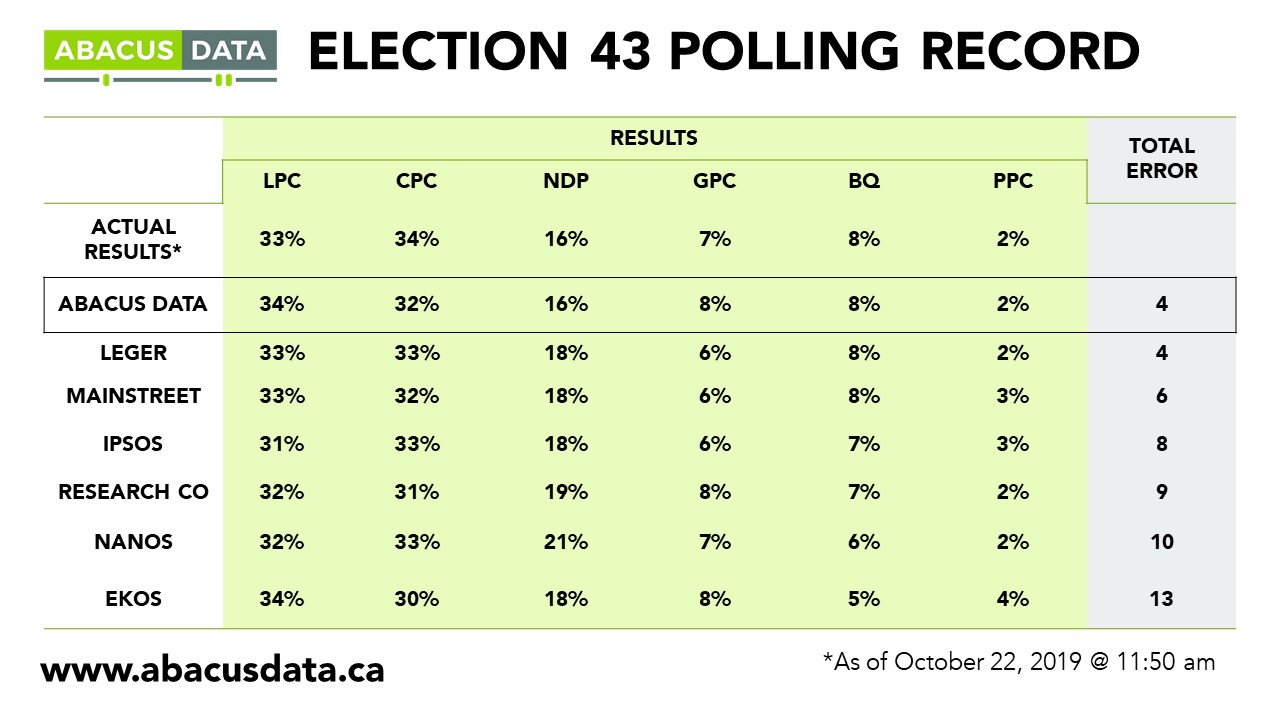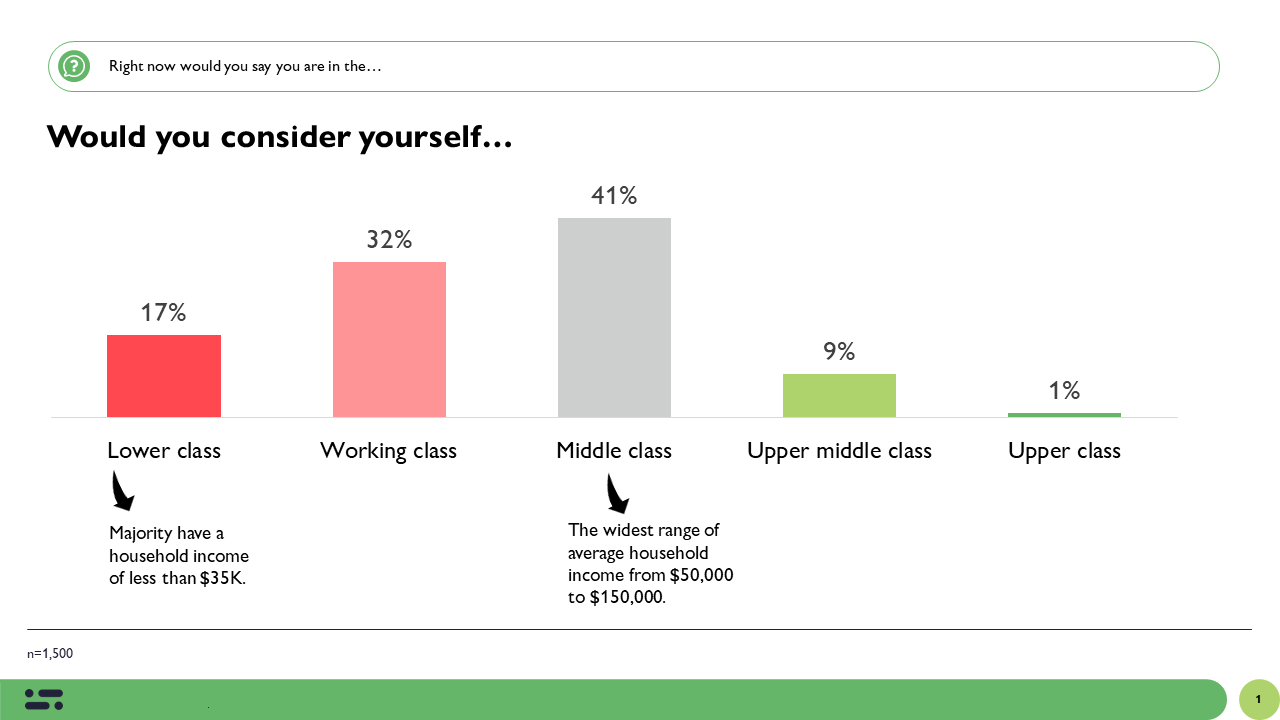Diversity and Inclusion in the Workplace
January 14, 2021
One of the things we can look forward to in 2021 (assuming vaccine timelines remain on track) is a slow return to the workplace. For some, this might be a welcome change but not everyone has had a positive experience in the workplace.
We do a lot of work with companies, unions, and member-based associations using research to help them better understand their workforce or membership and to serve them better on topics like inclusion & diversity, member relations and more. This got us interested in how the average employee in Canada feels about their workplace, especially about diversity and inclusion.
We found that Canadian workplaces still have a long way to go, especially when it comes to groups that traditionally face discrimination in the workplace.
Half of working Canadians (54%) have observed instances of discrimination towards other employees. This includes less than equal treatment based on their race, colour, religion, sexual orientation, or anything other than their skill.

Women are 10-pts more likely than men to observe an instance of discrimination.
Those who identify as a visible minority are 16-pts more likely to observe an instance of discrimination compared to those who do not.
And millennials and Gen Z are 16-pts more likely to observe discrimination, compared to older Canadians. Our previous research finds that younger generations are more sensitive and aware of discrimination and therefore are more likely to see it when it occurs. There is also a generational difference in how discrimination is defined and what different generations think constitute it. It’s also worth mentioning that Canada’s younger generations are more diverse than older ones which further adds to their awareness of the issue.
Close to half of working Canadians (45%) say that they’ve experienced discrimination themselves.

The difference between those who identify as a visible minority and those who do not is even more staggering.
65% of those identifying as a visible minority have experienced discrimination in the workplace, 26-points higher than those who don’t self-identify as a visible minority.
Perceived discrimination in the workplace is also higher among women than men – by 8-points.
And millennials and Gen Z are 12-pts more likely to report experiencing discrimination at work. Again, given that these two generations now make up the majority of working-aged Canadians this is a signal for employers everywhere that there’s much work to do.
All in all, 59% of Canadians have either witnessed discrimination in their workplace, experienced it themselves, or both. This includes two-thirds (65%) of women, two thirds of millennials/Gen Z (66%), and three quarters (74%) of those identifying as a visible minority.
Considering nearly two-thirds of Canadians have personally experienced or witnessed a situation of discrimination, it’s likely that there’s at least some dissatisfaction with the leadership at their organization.
But what we find is that this dissatisfaction doesn’t seem to come from what we perceive to be the belief systems of leaders or whether or not we feel they have the best intentions.
We also asked employees whether they feel the leadership team at their organization believes in ensuring a culture of inclusivity for all employees and believes in the importance of promoting diversity.
Around 60% said they strongly believe that the leadership team at their organization believes in ensuring a culture of inclusivity. And similar numbers say the same about their leadership team believing in the importance of diversity.

And what’s most interesting is that women are much more likely to say their leadership team has their heart in the right place, compared to men. (There are no notable differences between those who identify as a visible minority and those who do not and age.)
When it comes to specifics, most give their workplace a good rating as well. At least 60% say that their employer does a good job providing equitable treatment for many backgrounds and identities including people of colour, women and LGBTQ+. Most also give their employer a good rating for ensuring equitable treatment amongst different religious and political beliefs.

The differences between gender, age and identifying as a visible minority are not as common. But there is a key difference between those who say they’ve experienced discrimination in their workplace (either first-hand or as a witness), and those who have not.
Those who feel there is discrimination in their workplace are 20-pts, and in some cases nearly 30-pts, less likely to say their workplace ensures equitable treatment for these groups.
And so, this interesting balance remains. On one hand, over 60% say their workplace provides equitable treatment for many different groups of people. But in what seems to be a direct contradiction, one in two have witnessed or experienced discrimination in the workplace because of their identity.
So, is it the policies and programs that could use improvement?
From an employee perspective, these are mixed too. 62% say their employer provides a safe and trusted way to discuss any discrimination/bullying in the workplace. The rest are not sure or don’t feel they do. The same number say there are appropriate training and policies to promote diversity and inclusion in the workplace.
Once again, while most say things are good, there is a clear difference between those who’ve experienced discrimination (themselves or as a witness) and those who have not. This difference is around 20-pts for each of the programs and policies below.

On paper, most Canadian companies would get a passing grade, but just barely. 62% may seem like a good majority of employees but a sizeable minority of Canadian workers don’t feel their workplace or employer is taking diversity seriously. And remember, that 62% who are satisfied is carried in large part by an older generation who no longer make up the majority of the workforce.
THE UPSHOT
According to Oksana Kishchuk:
One thing is clear: Experiencing discrimination in the workplace (either personally or as a witness) does a lot to shape one’s opinions about the actual diversity and acceptance in the workplace and whether or not the programs and policies in place are actually working.
Also important to note are the groups most likely to experience discrimination, either themselves or as witnesses, have been traditionally underrepresented in many industries but are only set to grow. This provides an opportunity for companies, unions, and member-based associations to change course and become inclusive for all, but it also creates challenges as leaders work to build diversity and inclusion policies that work for their increasingly diverse workforce.
There is a lot of work to be done and many different potential sources of the problem across all workplaces.
Perceptions about diverse workplaces may come from a lack of common definition of what constitutes discrimination, a problem that we often see between generations.
Or it might be because these discriminatory actions are more subtle, rooted in the company or industry culture, and not that easy to write into a diversity handbook. Things like candidates with ethnic names wiping references to their ethnicity from their resumes so they have a better shot at a job, or women receiving more vague, less business oriented feedback during their performance reviews.
Everyone can have the same diversity rules in their handbook, but the actions or inaction of staff, and the implicit company or industry culture can make or break diversity in a workplace. These subtleties aren’t the same everywhere. That’s why it is so important to collect feedback from employees, to understand what’s working and what can be improved on when it comes to diversity and inclusion, and beyond.
Another reason may be that these discriminatory actions aren’t adequately covered in any of the programs and policies in the first place. It seems that most workplaces in Canada are equipping their teams with policies and training, but are these tools actually effective for managers to instill the values of diversity and inclusion? Hearing from mangers is just as important as hearing from staff, to understand if the policies created in head office can actually be implemented across the company.
But above all else, regardless of the contributing factors, more needs to be done to ensure that no Canadian worries about facing discrimination during the work day.
So how does your workplace compare? Now that you know what the average working Canadian thinks are you able to see how your workforce measures up? Or are you unsure if your colleagues and employees feel the same?
From our own experience, and with this research we know that challenges happen in nearly every industry and workplace, but the specific circumstances are unique to your workplace/industry culture. If you are interested in conducting an assessment within your own company, union or member-based organization we’d love to have a conversation to learn more about your unique context and how we can develop a research approach that meets your needs. Please reach out at: oksana@abacusdata.ca.
METHODOLOGY
The survey was conducted with 691 employed Canadians aged 18 and older from November 26 to December 1, 2020. A random sample of panellists was invited to complete the survey from a set of partner panels based on the Lucid exchange platform. These partners are typically double opt-in survey panels, blended to manage out potential skews in the data from a single source.
The margin of error for a comparable probability-based random sample of the same size is +/- 3.7 %, 19 times out of 20.
The data were weighted according to census data to ensure that the sample matched Canada’s population according to age, gender, educational attainment, and region. Totals may not add up to 100 due to rounding.
ABOUT ABACUS DATA
We are the only research and strategy firm that helps organizations respond to the disruptive risks and opportunities in a world where demographics and technology are changing more quickly than ever.
We are an innovative, fast-growing public opinion and marketing research consultancy. We use the latest technology, sound science, and deep experience to generate top-flight research-based advice to our clients. We offer global research capacity with a strong focus on customer service, attention to detail and exceptional value.
We were one of the most accurate pollsters conducting research during the 2019 Canadian Election.

Contact us with any questions.
Find out more about how we can help your organization by downloading our corporate profile and service offering.



